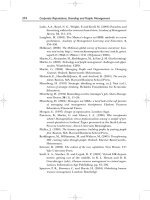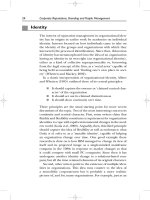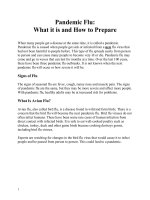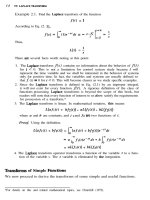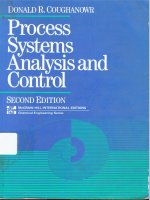Tài liệu Cisco Systems - Link-State and balanced hybrid routing pdf
Bạn đang xem bản rút gọn của tài liệu. Xem và tải ngay bản đầy đủ của tài liệu tại đây (368.76 KB, 12 trang )
© 2002, Cisco Systems, Inc. All rights reserved.
Link-State and Balanced
Hybrid Routing
©© 2002, Cisco Systems, Inc. All rights reserved.
2002, Cisco Systems, Inc. All rights reserved.
ICND v2.0—5-2
2
Objectives
Upon completing this lesson, you will be
able to:
• Describe the issues associated with link-state
routing and identify solutions to those issues
• Describe the features of balanced hybrid routing
protocols
© 2002, Cisco Systems, Inc. All rights reserved.
ICND v2.0—5-3
Link-State Routing Protocols
• After initial flood, pass small event-triggered link-state
updates to all other routers
© 2002, Cisco Systems, Inc. All rights reserved.
ICND v2.0—5-4
Link-State Network Hierarchy
Example
• Minimizes routing table entries
• Localizes impact of a topology change within
an area
© 2002, Cisco Systems, Inc. All rights reserved.
ICND v2.0—5-5
Link-State Routing
Protocol Algorithms
© 2002, Cisco Systems, Inc. All rights reserved.
ICND v2.0—5-6
Benefits of Link-State Routing
• Fast convergence: changes are reported
immediately by the source affected.
• Robustness against routing loops:
– Routers know the topology.
– Link-state packets are sequenced and
acknowledged.
• By careful (hierarchical) network design, you
can utilize resources optimally.
© 2002, Cisco Systems, Inc. All rights reserved.
ICND v2.0—5-7
Caveats of Link-State Routing
• Significant demands for resources:
– Memory (three tables: adjacency, topology, forwarding)
– CPU (Dijkstra’s algorithm can be intensive, especially
when a lot of instabilities are present.)
• Requires very strict network design (when more areas—
area routing)
• Problems with partitioning of areas
• Configuration generally simple but can be complex
when tuning various parameters and when the design is
complex
• Troubleshooting easier than in distance vector routing
© 2002, Cisco Systems, Inc. All rights reserved.
ICND v2.0—5-8
Drawbacks to Link-State Routing
Protocols
• Initial discovery may cause flooding.
• Memory- and processor-intensive.
© 2002, Cisco Systems, Inc. All rights reserved.
ICND v2.0—5-9
Balanced Hybrid Routing
• Shares attributes of both distance vector
and link-state routing
© 2002, Cisco Systems, Inc. All rights reserved.
ICND v2.0—5-10
Summary
• Link-state routing uses LSAs, a topological
database, the SPF algorithm, the resulting SPF tree,
and a routing table of paths and ports to each
network.
• Link-state routing algorithms maintain a complex
database of the network's topology by exchanging
LSAs with other routers in a network.
• Link-state routing may flood the network with LSAs
during initial topology discovery and can be both
memory- and processor-intensive.
• Balanced hybrid routing protocols combine aspects
of both distance vector and link-state protocols.
© 2002, Cisco Systems, Inc. All rights reserved.
ICND v2.0—5-11



